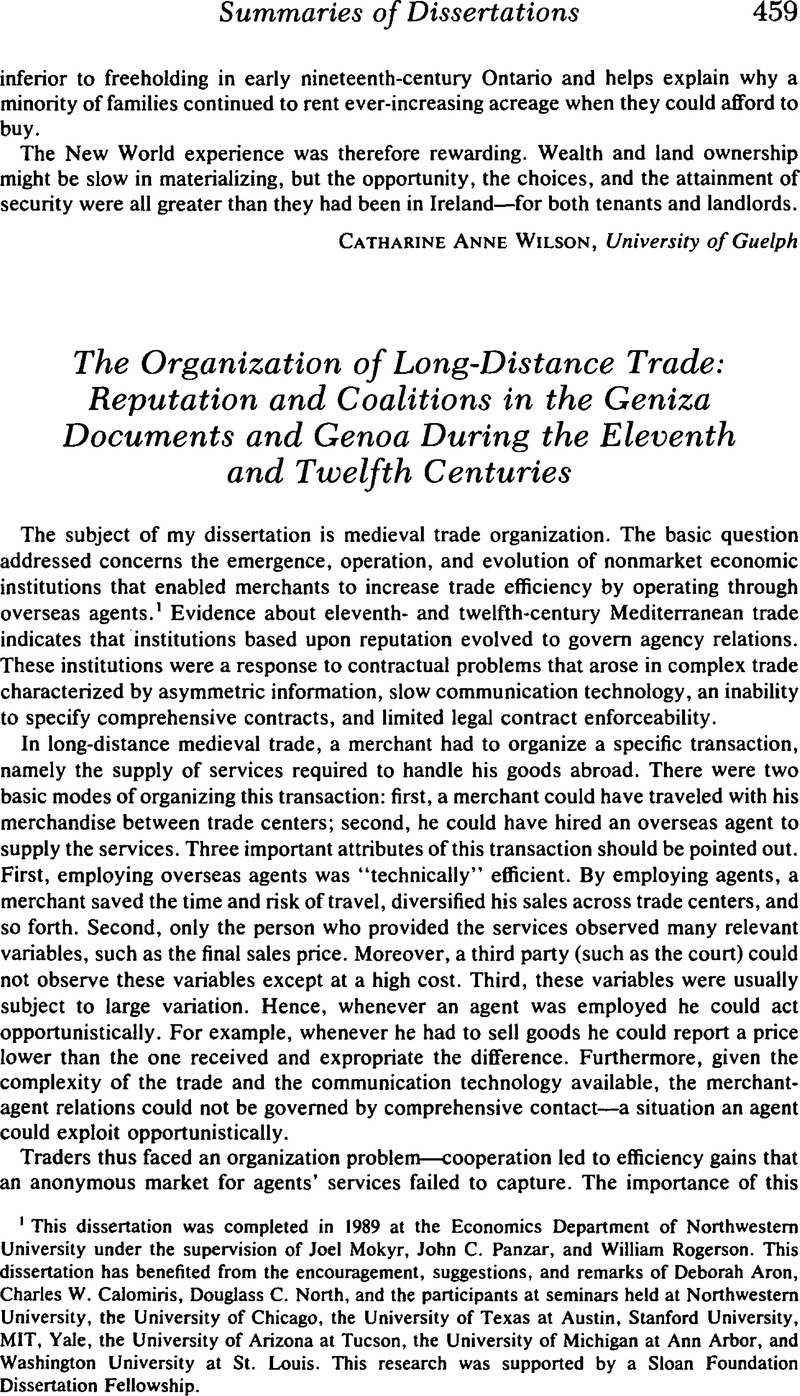Published online by Cambridge University Press: 03 March 2009

1 This dissertation was completed in 1989 at the Economics Department of Northwestern University under the supervision of Joel Mokyr, John C. Panzar, and William Rogerson. This dissertation has benefited from the encouragement, suggestions, and remarks of Deborah Aron, Charles W. Calomins, Douglass C. North, and the participants at seminars held at Northwestern University, the University of Chicago, the University of Texas at Austin, Stanford University, MIT, Yale, the University of Arizona at Tucson, the University of Michigan at Ann Arbor, and Washington University at St. Louis. This research was supported by a Sloan Foundation Dissertation Fellowship.Google Scholar
2 See, for example, Lopez, Robert S., The Commercial Revolution of the Middle Ages, 950–1350 (New York, 1976);CrossRefGoogle ScholarPirenne, Henri, Mohammed and Charlemagne (New York, 1939);Google Scholar and Pirenne, Henri, A History of Europe (New York, 1956).Google Scholar
3 For a general introduction to the geniza documents, see Goitein, S. D., A Mediterranean Society: Economic Foundations (Los Angeles, 1967), introduction;Google Scholar the article “Geniza” in Houtsma, M. Th., ed., Encyclopedia of Islam (2nd edn., Leyden, 1978), vol. 3, pp. 987–99.Google Scholar
4 See, for example, Byrne, Eugene H., “Genoese Trade with Syria in the Twelfth Century,” American Historical Review, 25 (1920), pp. 191–219;CrossRefGoogle ScholarByrne, Eugene H., “The Genoese Colonies in Syria,” in Paetow, L. J., ed., The Crusade and other Historical Essays (New York, 1928);Google ScholarDay, Gerald W., Genoa's Response to Byzantium, 1154–1204 (Urbana, 1988);Google Scholar and Krueger, Hilmar K., “The Commercial Relations between Genoa and Northwest Africa in the Twelfth Century” (Ph.D. diss., University of Wisconsin at Madison, 1932).Google Scholar